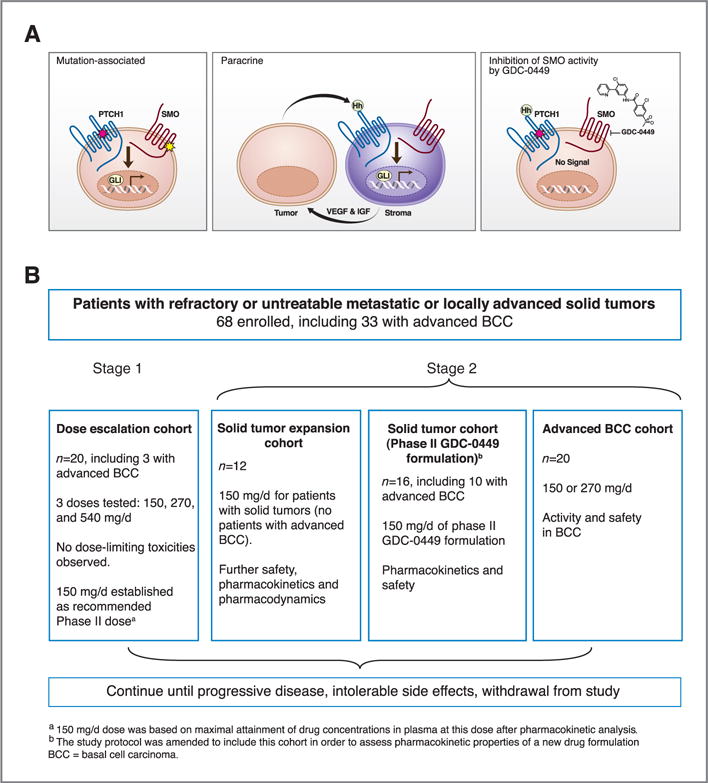Figure 1.

Abnormalities in hedgehog pathway signaling, mechanism of GDC-0449 activity, and study schema. A, mechanisms of abnormal hedgehog signaling associated with different cancers are shown in the first 3 panels. Type I, left, BCC and medulloblastoma are associated with mutations in hedgehog signaling pathways; mutations in PTCH1 (pink star) can prevent PTCH1 from inhibiting SMO activity, or mutations in SMO (yellow star) can constitutively activate SMO, resulting in downstream effects of increased GL1 expression. Type III, middle, production of hedgehog ligand by tumor cells may stimulate stromal cells to produce factors associated with tumor growth, possibly including vascular endothelial growth factor (VEGF) and insulin-like growth factor (IGF). The right panel shows how GDC-0449 inhibits hedgehog pathway signaling by inhibiting the activity of SMO. B, a schema for the phase I study.
